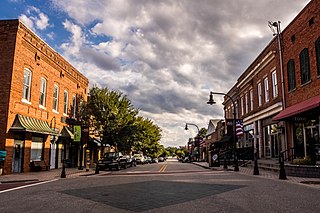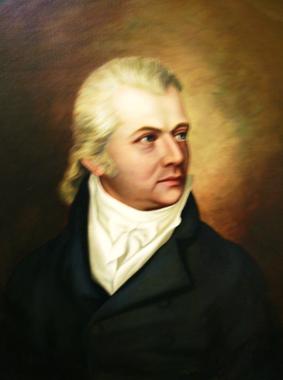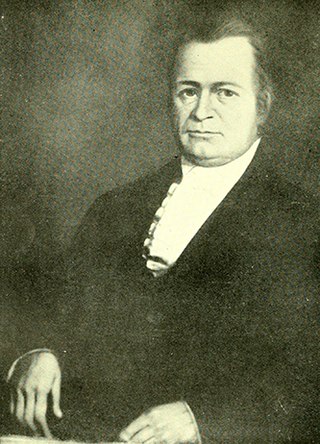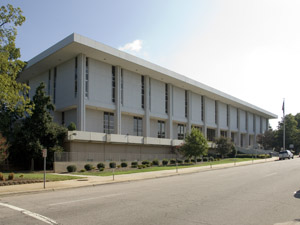
Raleigh is the capital city of the U.S. state of North Carolina and the seat of Wake County. It is the second-most populous city in North Carolina, after Charlotte. Raleigh is the tenth-most populous city in the Southeast, the 41st-most populous city in the U.S., and the largest city of the Research Triangle metro area. Raleigh is known as the "City of Oaks" for its many oak trees, which line the streets in the heart of the city. The city covers a land area of 147.6 sq mi (382 km2). The U.S. Census Bureau counted the city's population as 467,665 in the 2020 census. It is one of the fastest-growing cities in the United States. The city of Raleigh is named after Sir Walter Raleigh, who established the now-lost Roanoke Colony in present-day Dare County.

Wake County is located in the U.S. state of North Carolina. In the 2020 census, its population was 1,129,410, making it North Carolina's most populous county. From July 2005 to July 2006, Wake County was the 9th-fastest growing county in the United States, with Cary and Raleigh being the 8th- and 15th-fastest growing communities, respectively.

Wake Forest is a town in Franklin, Granville and Wake counties in the U.S. state of North Carolina; located almost entirely in Wake County, it lies just north of the state capital, Raleigh. At the 2020 census, the population was 47,601. That is up from 30,117 in 2010, up from 12,588 in 2000. The U.S. Census Bureau estimates the city's population to be 47,601 as of April 1, 2020. In 2007, the town was listed by Forbes magazine as the 20th fastest growing suburb in America, with a 73.2 percent increase in population between 2000 and 2006. Wake Forest was the original home of Wake Forest University for 122 years before it moved to Winston-Salem in 1956.

Cary is a town in Wake, Chatham, and Durham counties in the U.S. state of North Carolina and is part of the Raleigh-Cary, NC Metropolitan Statistical Area. According to the 2020 census, its population was 174,721, making it the seventh-most populous municipality in North Carolina, and the 148th-most populous in the United States. In 2022, the town's population had increased to 180,388.

Morrisville is a town located primarily in Wake County, North Carolina, United States. According to the 2020 census, the population was 29,630. Morrisville is part of the Research Triangle metropolitan region. The regional name originated after the 1959 creation of the Research Triangle Park, located midway between the cities of Raleigh and Durham. The Research Triangle region encompasses the Raleigh-Durham-Cary, NC Combined Statistical Area. The population of the Raleigh-Durham-Cary, NC Combined Statistical Area was 2,106,463 in 2020, while the population of the Raleigh-Cary, NC Metropolitan Statistical Area was 1,413,982 in 2020. The operational headquarters of Lenovo is located in the municipal limits.

John Louis Taylor was an American jurist and first chief justice of the North Carolina Supreme Court.

Calvin Jones was a North Carolina physician and was among the group of founders of the North Carolina Medical Society. He served from 1802 to 1832 as a trustee of the University of North Carolina. Jones was also elected to the North Carolina House of Commons and as the Mayor of Raleigh, North Carolina (1807–1809). In 1817 and 1819 he was Grand Master of Masons in North Carolina.

Crabtree Creek is a tributary of the Neuse River in central Wake County, North Carolina, United States. The creek begins in the town of Cary and flows through Morrisville, William B. Umstead State Park, and the northern sections of Raleigh before emptying into the Neuse at Anderson Point Park, a large city park located in East Raleigh.

The Dodd-Hinsdale House was built in 1879 for the family of the Raleigh, Wake County, North Carolina, city mayor. It was constructed in the Italianate style, with some Second Empire embellishments.

Edenton Historic District is a national historic district located at Edenton, Chowan County, North Carolina. The district encompasses 342 contributing buildings, 4 contributing sites, and 3 contributing structures. It includes several buildings that are individually listed on the National Register. The Lane House, possibly the oldest surviving house in North Carolina, is owned by Steve and Linda Lane and is located within the district. Also located in the district are the Dixon-Powell House, William Leary House, and Louis Ziegler House designed by architect George Franklin Barber.

The Mordecai House, built in 1785, is a registered historical landmark and museum in Raleigh, North Carolina that is the centerpiece of Mordecai Historic Park, adjacent to the Historic Oakwood neighborhood. It is the oldest residence in Raleigh on its original foundation. In addition to the house, the Park includes the birthplace and childhood home of President Andrew Johnson, the Ellen Mordecai Garden, the Badger-Iredell Law Office, Allen Kitchen and St. Mark's Chapel, a popular site for weddings. It is located in the Mordecai Place Historic District.

Falls, is an unincorporated community in Wake County, North Carolina, United States, situated on Old Falls of Neuse Road, between Raleigh and Wake Forest, near the Wakefield Plantation development. Falls Dam, on the Neuse River, is within the community.

Historic Oakwood is a neighborhood in downtown Raleigh, North Carolina, United States, on the National Register of Historic Places, and known for its Historic Oakwood Cemetery, its many Victorian houses and its location close to the Mordecai Plantation Manor. Located near the State Capitol and St. Augustine's Chapel, during the 19th century Historic Oakwood was home to prominent members of Raleigh's society. It is North Carolina's largest, intact 19th Century residential neighborhood and Raleigh's earliest white middle-class suburb. Unlike later suburbs, it developed lot-by-lot over time, instead of by platted sections. Its Victorian-era architectural styles include Second Empire, Queen Anne, and Italianate. Later infill brought the bungalow, the American Foursquare, American Craftsman style, and the Minimal Traditional house to the area.

The North Carolina School for the Deaf (NCSD) is a state-supported residential school for deaf children established in 1894, in Morganton, North Carolina, US.
The following is a timeline of the history of the city of Raleigh, North Carolina, USA.

The State Archives of North Carolina, officially the North Carolina Division of Archives and Records, is a division of North Carolina state government responsible for collecting, preserving, and providing public access to historically significant archival materials relating to North Carolina, and responsible for providing guidance on the preservation and management of public government records to state, county, city and state university officials. First founded as the North Carolina Historical Commission in 1903, the State Archives has undergone multiple changes in organization, title, and relation to other state agencies. Since May 2012, it has been known as the Division of Archives and Records within the North Carolina Department of Natural & Cultural Resources' Office of Archives and History.

Nancy Jones House is a historic home located near Cary, Wake County, North Carolina. It was listed on the National Register of Historic Places in 1984. It is the oldest surviving structure in Cary.
Walnut Creek is a 17.93 mi (28.86 km) long 4th order tributary to the Neuse River in Wake County. Its source is a small pond near WakeMed Soccer Park in Cary, and it flows generally eastward through several small reservoirs, including Lake Cramer in Cary as well as Lake Johnson and Lake Raleigh in Raleigh, before reaching its confluence with the Neuse just south of Poole Road in East Raleigh. The course of the creek closely parallels Interstate 40, running mostly along the north side of the freeway.
James Coor was an architect, builder, politician and leader in North Carolina.

Jeanelle Coulter Moore was an American schoolteacher, patron of the arts, and civic leader who, as the wife of Governor Dan K. Moore, served as the First Lady of North Carolina from 1965 to 1969. She was the first wife of a governor in North Carolina to have a full-time secretary and maintain her own office in the North Carolina Executive Mansion, and she served as president of the Sir Walter Cabinet while her husband was in office. She was responsible for the creation of the Executive Mansion Fine Arts Committee within the North Carolina Department of Natural and Cultural Resources, which provides funding to restore and decorate the official residence, and established a chapel at the Raleigh Correctional Center for Women. Prior to her time as first lady, Moore served as a board member of the North Carolina Fund and of the North Carolina School of the Arts, having been appointed by Governor Terry Sanford. In 1980 she received the North Carolina Award for Public service.























